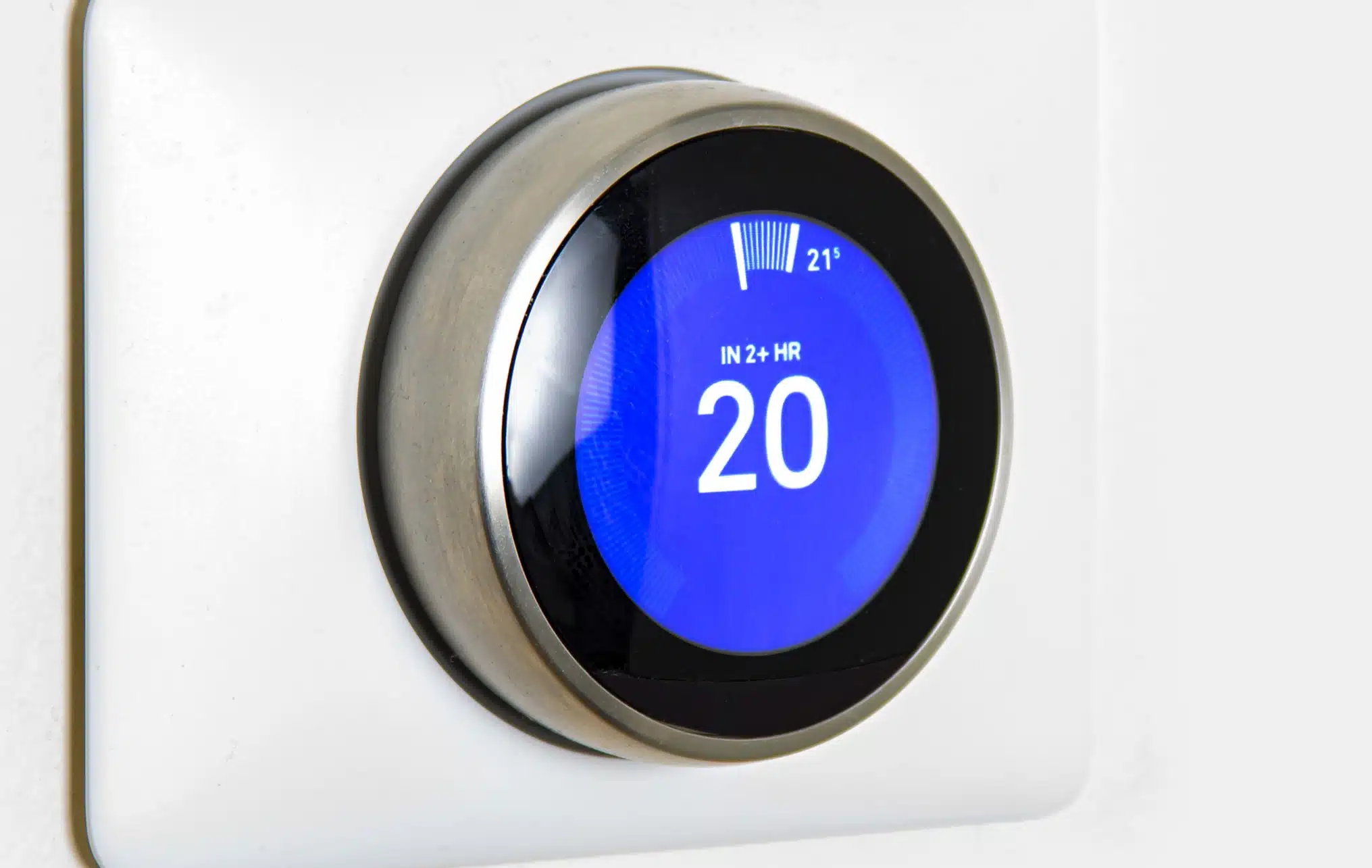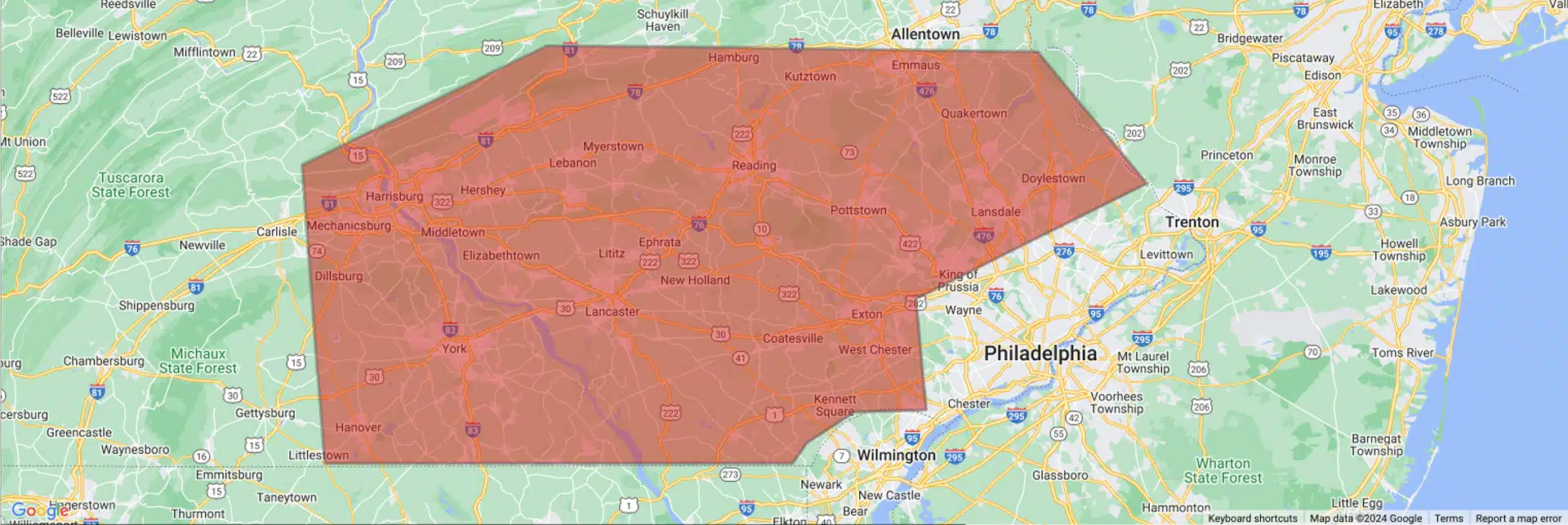Why is it so important to keep your garage or workshop warm during Harrisburg’s freezing winters? Beyond comfort, proper heating protects your tools, equipment, and projects from the damaging effects of extreme cold. A well-heated space ensures you can work efficiently, no matter how low the temperature drops. Choosing the right solutions is not just about warmth; it is about safety and energy efficiency too. In this guide, we’ll explore proven methods to heat your garage or workshop effectively, helping you create a comfortable and secure environment all winter long.
Assessing Your Garage or Workshop
Preparing your garage or workshop for Harrisburg’s freezing winters starts with improving insulation. Proper insulation is essential for retaining warmth, ensuring your space remains comfortable while minimizing energy waste. Without it, warm air escapes, leaving your efforts to stay cozy ineffective. Check walls, ceilings, and doors for gaps or insufficient insulation. Seal drafts around windows and openings with weatherstripping or caulking to prevent heat loss and improve overall efficiency.
Once the insulation is optimized, consider the specific needs of your space to determine the best approach. Smaller or infrequently used areas may benefit from temporary solutions, while larger, heavily used workshops might require a more robust setup. Tailoring your strategy ensures a comfortable and productive environment, even during the harshest months.
By focusing on insulation and addressing your space’s unique requirements, you will create a warm, efficient, and functional workshop or garage that withstands the cold. Proper preparation now will ensure you stay productive and comfortable throughout the winter season.
Insulation: The First Line of Defense
Maintaining a warm garage or workshop during Harrisburg’s brutal winters starts with proper insulation—it is your first and most critical defense. Without effective insulation, heat escapes quickly, leaving your space cold and your energy bills sky-high. Insulating walls, ceilings, and garage doors creates a barrier that traps warmth, ensuring comfort and efficiency.
Choosing the right insulation materials is key to achieving lasting results. Fiberglass batts are a reliable choice for walls and ceilings, offering excellent thermal resistance and affordability. For garage doors, foam board or reflective insulation kits provide an effective way to block cold air and retain warmth. Spray foam insulation is perfect for sealing small gaps and hard-to-reach areas, creating a tight barrier that prevents drafts and ensures maximum heat retention.
Investing in insulation does not just keep you warm—it saves money over time by reducing energy consumption and preventing wear on your heating system. Beyond efficiency, a well-insulated space also blocks outdoor noise, creating a quieter and more focused work environment.
Insulating your garage or workshop is a smart, essential step to winterizing your space. By fortifying it against the cold, you will enjoy a productive, energy-efficient, and comfortable environment all winter long.
Electric Space Heaters
Electric space heaters provide an effective way to warm garages and workshops during winter, offering targeted warmth for specific areas. These devices are versatile, efficient, and ideal for creating a comfortable workspace, but using them responsibly is essential to ensure safety and energy efficiency.
Choosing the Right Heater
Selecting the right model depends on the size and use of your space. Fan-forced designs are perfect for smaller areas, circulating warm air quickly and evenly. For localized tasks, radiant models provide direct warmth, ensuring focused comfort where needed. Oil-filled options are excellent for maintaining consistent temperatures in larger workshops. To ensure long-term reliability, choose a heater designed specifically for garages or workshops, as these models are built to withstand tougher conditions.
Safety First
Safety is paramount when using a heater. Place it on a stable, flat surface and keep it away from flammable materials like paper, chemicals, or wood. Ensure proper ventilation to maintain air quality and prevent overheating. Opt for models with built-in safety features, such as automatic shutoff, to reduce risks. Avoid leaving it unattended and always turn it off when not in use.
Boosting Efficiency
Maximizing the heater’s efficiency begins with proper insulation. Insulating walls, ceilings, and doors helps retain warmth, reducing the strain on the system. Using a thermostat-controlled device ensures consistent temperature regulation, conserving energy and enhancing comfort.
Electric space heaters offer a practical solution for warming your workspace during winter. By selecting the right model, following safety practices, and optimizing insulation, you can create a secure, efficient, and warm environment that supports productivity even during the coldest months.
Infrared Heaters
How Infrared Heaters Work and Their Advantages
Infrared heaters are a cutting-edge solution for efficient and targeted warmth. These devices work by emitting infrared radiation, which directly warms objects and people rather than the surrounding air. Unlike traditional systems, which rely on convection to distribute heat, infrared technology delivers a fast, consistent warmth. This unique mechanism ensures reduced energy waste, making it an eco-friendly and cost-effective option.
One of the key advantages of infrared heaters is their ability to provide localized warmth. Whether you are working in a garage, enjoying a patio evening, or warming a specific room, these devices excel in delivering precise comfort. Additionally, they operate silently, making them ideal for spaces where noise is a concern. Their sleek, compact designs also blend seamlessly with various settings.
Considerations for Placement and Safety
Proper placement and safety precautions are crucial to ensure effective performance and avoid hazards. Infrared heaters should be positioned in areas free from flammable materials and within the recommended distance specified by the manufacturer. Wall-mounted models are especially beneficial for conserving floor space and enhancing safety. Regular maintenance, such as dusting the heater and inspecting its components, can extend its lifespan and ensure consistent functionality.
Safety features such as overheat protection and tip-over switches are often built into modern infrared heaters. Still, users should always supervise their operation, particularly in households with children or pets. Selecting a model with an appropriate heat output for your space also prevents energy waste and ensures comfort.
Infrared heaters stand out as a reliable solution for a variety of environments. Their efficiency, precision, and sleek designs make them a popular choice for maintaining a warm and cozy atmosphere during colder months. By selecting the right model and following placement guidelines, you can enjoy safe, effective warmth throughout the season.
Forced-Air Heating Systems
Forced-air systems are one of the most effective solutions for keeping larger garages and workshops warm during the winter months. These systems operate by warming air in a centralized unit and distributing it through ducts and vents to provide even warmth throughout the entire space. Their capacity to quickly and consistently heat large areas makes them indispensable for workshops or garages with expansive layouts or high ceilings.
Advantages of Forced-Air Systems
The key advantage of a forced-air system lies in its ability to deliver fast, efficient heating to sizable spaces. These systems work rapidly, ensuring your workshop or garage reaches a comfortable temperature in minutes. Compatibility with modern thermostats, including smart options, adds convenience and energy efficiency by allowing precise temperature control. For those looking for multi-seasonal functionality, many forced-air systems also integrate cooling capabilities, offering a year-round climate solution. Their versatility makes them a practical investment for multipurpose spaces requiring reliable temperature management.
Installation Requirements and Considerations
Installing a forced-air system requires thoughtful planning and professional expertise. Adequate space is necessary to accommodate ductwork and vents for effective heat distribution. The system layout must align with the design of the garage or workshop to maximize efficiency. Ventilation is another critical consideration, especially for systems powered by natural gas or propane, to ensure safe expulsion of combustion gases and prevent harmful fumes. The choice of energy source—gas, oil, or electricity—should align with utility availability, operating costs, and efficiency goals. Professional installation is strongly recommended to ensure the system operates safely, efficiently, and in compliance with local regulations.
When paired with proper insulation, forced-air systems provide consistent, energy-efficient heating for larger spaces. By investing in this robust solution, you can maintain a warm and productive workspace throughout winter, no matter how severe the weather outside.
Radiant Floor Heating
Radiant floor heating is an innovative and efficient solution for maintaining warmth in garages and workshops. Unlike traditional systems that warm the air, radiant floors use heated water or electric coils embedded beneath the surface to create a comfortable environment. This approach provides consistent warmth from the ground up, eliminating cold spots and ensuring even distribution throughout the space.
How Radiant Floor Systems Work
Radiant floor systems utilize either hydronic or electric technologies to deliver warmth. Hydronic systems circulate hot water through a network of tubing beneath the floor, while electric systems rely on heating coils. As the floor warms, it radiates warmth upward, ensuring consistent comfort throughout the garage or workshop. This direct approach minimizes energy loss associated with air circulation, making it particularly effective for maintaining a cozy and efficient workspace.
Benefits of Radiant Floors
Radiant floors are not only efficient but also silent, as they operate without fans or blowers. This feature creates a peaceful workspace free of noise. The absence of vents and bulky units frees up valuable space, allowing for better organization. Additionally, these systems are energy-efficient, targeting surfaces and people directly rather than wasting energy on heating.
Installation and Considerations
While radiant floors are a premium choice, their installation requires thoughtful planning. Retrofitting an existing garage may be complex, but incorporating them into a new build is cost-effective and straightforward. Proper insulation beneath the system is essential to maximize efficiency and minimize energy waste. Though the initial investment is higher, the long-term benefits of comfort and lower energy costs make it worthwhile.
Radiant floor heating is an excellent choice for garages and workshops, providing unmatched warmth and efficiency. With proper installation and planning, it transforms cold, uncomfortable spaces into productive winter work environments.
Safety Tips for Winter Heating
Creating a warm and safe garage or workshop during winter requires careful attention to safety measures. A well-heated workspace is essential, but without proper precautions, heating systems can pose risks. By following these tips, you can ensure both comfort and security while maintaining efficiency.
-
Use the Right Equipment
Selecting the appropriate heating solution is the first step. Choose a model designed specifically for garages or workshops and ensure it includes critical safety features like automatic shutoff and tip-over protection. Using devices suited to your space improves performance and reduces potential hazards.
-
Ensure Proper Ventilation
Ventilation is crucial, particularly for systems powered by gas or propane. Poor airflow can result in the buildup of harmful fumes, including carbon monoxide. Regularly check ventilation systems to ensure they are unobstructed and functioning correctly. Installing a carbon monoxide detector adds an extra layer of safety.
-
Maintain a Clear Area
Keep the area around the heater free of flammable materials such as chemicals, wood, or paper. Position the equipment on a stable, flat surface to prevent tipping and ensure optimal operation. A clutter-free environment significantly reduces fire risks.
-
Turn Off When Unattended
Never leave the system running when you are not in the space. Turning it off during breaks or when leaving ensures safety while conserving energy.
-
Regular Maintenance
Inspect your system regularly to confirm it is operating safely and efficiently. Clean filters, clear vents, and address any issues immediately to prevent malfunctions. Proper maintenance extends the life of the system and ensures consistent performance.
By taking these precautions, you can maintain a warm, secure workspace while protecting yourself, your equipment, and your environment from potential hazards. A well-maintained heating system and thoughtful safety practices ensure comfort and peace of mind all winter long.

Energy Efficiency Tips for Winter Heating
Keeping your garage or workshop warm during winter doesn’t have to mean high energy costs. By following smart strategies, you can maintain comfort while conserving energy and prolonging the efficiency of your heating solution.
Insulation is Essential
Proper insulation is the first step toward efficient heating. Insulating walls, ceilings, and garage doors helps retain warmth, reducing the strain on your system. Sealing drafts around windows and doors with weatherstripping or caulking prevents cold air from seeping in, minimizing energy waste and keeping your workspace consistently warm.
Leverage Smart Thermostats
Smart thermostats are a simple yet effective way to optimize heating efficiency. These devices allow you to set specific schedules, ensuring your system only runs when needed. Advanced features like remote control and adaptive learning reduce unnecessary usage while maintaining consistent temperatures, ultimately saving energy and enhancing comfort.
Maintain Your System Regularly
A well-maintained heating system operates more efficiently and lasts longer. Clean or replace filters to ensure proper airflow and prevent overworking the system. Inspect ducts and vents for blockages or leaks that could hinder performance. Regular maintenance not only improves efficiency but also prevents costly repairs.
Smart Usage Practices
Adopt habits that maximize your system’s efficiency. Zone heating warms only the areas in use, cutting down unnecessary energy expenditure. Using ceiling fans to circulate warm air evenly further reduces heat loss. Always turn off your system when it is not needed to conserve energy without compromising comfort.
By combining proper insulation, smart technology, regular maintenance, and efficient usage, you can maintain a warm, cost-effective workspace throughout the winter. These strategies ensure your heating system provides reliable comfort while keeping energy bills manageable.

Frequently asked questions (FAQs)
-
What is the safest way to heat a garage or workshop?
The safest option is to use equipment specifically designed for garages and workshops. Look for a heater with built-in safety features such as automatic shutoff and tip-over protection. Place it on a stable surface away from flammable materials like wood, chemicals, or paper. Ensure proper ventilation and always turn off the system when leaving the space.
-
How can I improve energy efficiency in my garage or workshop?
Start with proper insulation for walls, ceilings, and garage doors to maintain a consistent indoor temperature. Seal drafts with weatherstripping or caulking to prevent unwanted air exchange. Pair your climate control system with a smart thermostat to optimize energy usage, ensuring it operates only when needed and sustains an even, comfortable environment efficiently..
-
What type of heating system works best for a workshop?
The best system depends on your workspace size and specific requirements. Smaller areas often benefit from portable climate control devices, while larger workshops may require systems like forced-air solutions or radiant floor setups for consistent comfort. Assess your space and energy needs to determine the most effective option for maintaining an ideal environment.
-
Are radiant floor heating systems worth the investment?
Radiant floor systems provide even warmth from the ground up, eliminating cold spots and operating silently. They are energy-efficient and save floor space, making them an excellent option for workshops. Although installation costs are higher, long-term savings and consistent comfort justify the expense.
-
How often should heating systems and heaters be maintained?
Regular maintenance ensures safety and efficiency. Clean filters monthly, check vents for blockages, and schedule annual professional inspections to identify issues. Proper care extends the lifespan of your system and keeps it running smoothly.
This winter, keep your garage or workshop cozy with tailored solutions from One Hour Heating & Air Conditioning of Lancaster, PA. Contact us today for expert guidance and a workspace that’s warm, safe, and efficient!





















